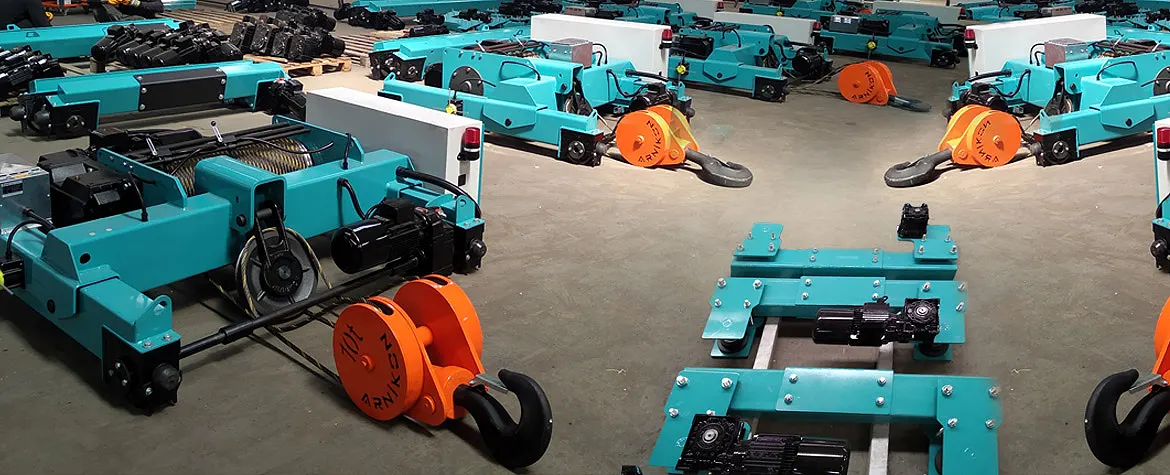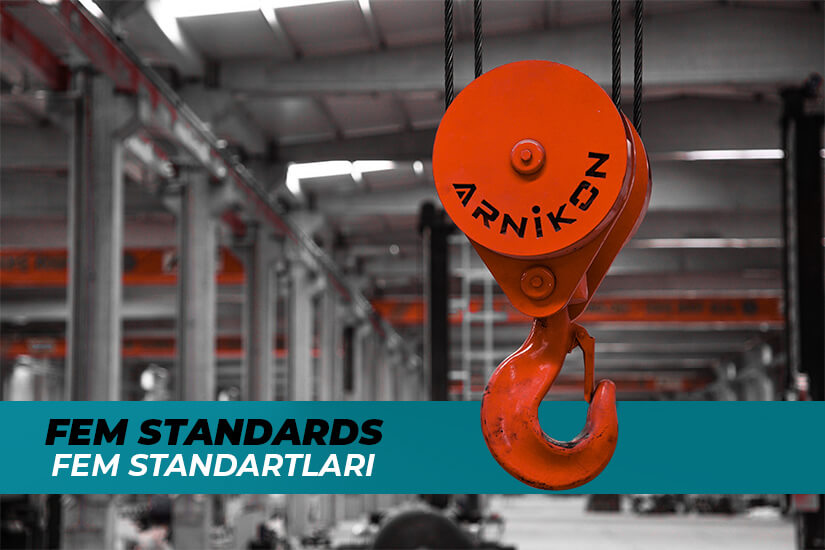Fem Classes and DIN Norms in Cranes
Selection of Travelling Cranes according to FEM Class is determined according to the working hours of the cranes.
- The appliance as a whole,
- The individual mechanism as a whole,
- The structural and mechanical components divided into three groups.
The classification is based on two criteria, namely;
- The total duration of use of the item considered,
- The hook load, loading or stress spectra to wich the item is subjected.
Higher FEM group does not mean more loading capacity; however, it means more operating mode in operation and the ability to be subjected to greater maximum loads and dynamic forces in operation cycles. (Table 1 )
Table-1: FEM Group Selection Table
| FEM GROUP SELECTION TABLE | |||||||
| LOADING CLASS | "t" AVERAGE DAILY WORKING DURATION | ||||||
| 1 | LIGHT Cranes that usually lift light weights, only in special cases (rarely) maximum loads. |
|
< 2 | 2 - 4 | 4 - 8 | 8 - 16 | > 16 |
| 2 | MEDIUM Cranes that usually lift light loads, but often maximum loads. |
|
< 1 | 1 - 2 | 2 - 4 | 4 - 8 | 8 - 16 |
| 3 | HEAVY Cranes that usually lift medium weights, but often maximum loads. |
|
< 0.50 | 0.50 - 1 | 1 - 2 | 2 - 4 | 4 - 8 |
| 4 | VERY HEAVY Cranes that generally lift maximum and near maximum loads. |
|
< 0.25 | 0.25 - 0.50 | 0.50 - 1 | 1 - 2 | 2 - 4 |
| Mechanism Group | FEM 9.511/86 | 1Bm | 1Am | 2m | 3m | 4m | |
| ISO 4301/88 | M23 | M4 | M5 | M6 | M7 | ||
| Intermittent Working (%) | FEM 9.683/95 | 25 | 30 | 40 | 50 | 60 | |
| Intermittent Working (h-1) | FEM 9.683/95 | 150 | 180 | 240 | 300 | 360 | |
Parameters required to calculate the FEM Group; Lifting Qapacity(Q), Loading Class, Hook Height (H), Number of Operations per Hour (n), Daily Working Hours (T), Lifting Speed (Vh). “t” Average daily working time is not an estimate and it is calculated as below. This value allows the determination of lifting machines for the FEM class.
Example-1:
Example-2:
Comparison and Conclusion:
Characteristics such as capacity, lifting height, lifting speed are the same in both examples. However, the "Loading Classes" determined according to the operating conditions of the system are different.
In Example-1, the operating conditions are generally required to lift medium weights, but frequently maximum loads. For this reason, the load class is selected as "Heavy".
In Example-2, working conditions are generally required to lift light weights, only in special cases (rarely) maximum loads. For this reason, the loading class is selected as "Light".
It is very important to determine the loading class before the calculations are made.












